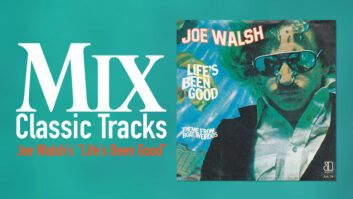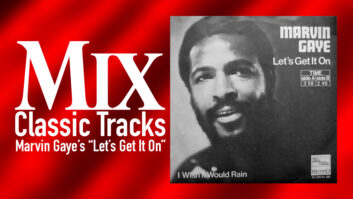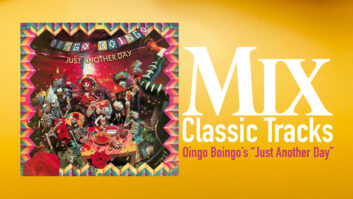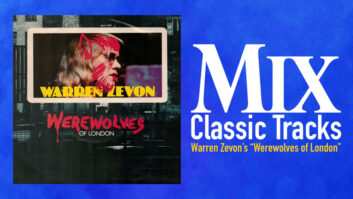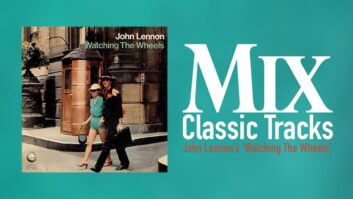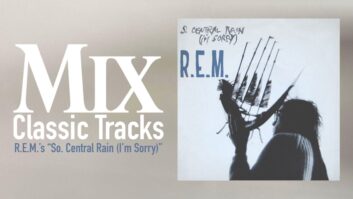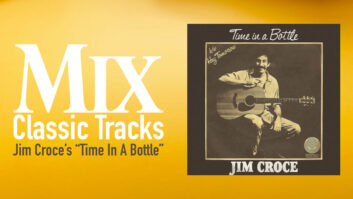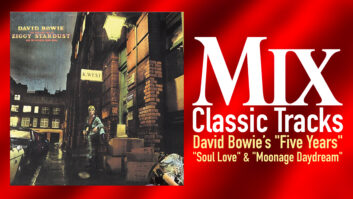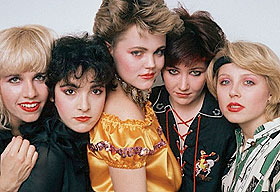
Nothing says 1980s L.A. like The Go-Go’s on the radio. Those sweet, bright, infectious songs were the perfect soundtrack for a sunny day—still are, though 30 years have passed since one of rock ’n’ roll’s first all-female bands released their debut album, Beauty and the Beat.
The Go-Go’s formed in the midst of L.A.’s late-’70s punk scene. None of the founding members—Belinda Carlisle, Jane Wiedlin and Margot Olaverra—were professional musicians. They were friends who bonded over shows by bands like The Germs and The Dickies.
In her recent memoir, Lips Unsealed, lead singer Carlisle recalls being outside a party in Venice, Calif., and the exact moment three fans became bandmates: “…the three of us found ourselves sitting on the curb with beers and cigarettes. We talked about the Sex Pistols’ show in San Francisco, which was still fresh in our minds, and I added stories from my trip to London, and eventually we were talking about starting our own band…It was like making a pact.”
The original Go-Go’s lineup included Carlisle, Wiedlin on guitar, Olaverra on bass and Elissa Bello playing drums. “Our first rehearsal was at Margot’s apartment off Robertson Boulevard,” writes Carlisle. “We were pretty scattered and lost. We didn’t even know how to start; we barely figured out how to set up our instruments. We banged around, tried to write songs and then went to Denny’s for dinner. We were situated in a booth, a mix of kicky hair styles and colors wrapped in cigarette smoke. All of us were in agreement that our first rehearsal had surpassed expectations.”
They had nowhere to go but up, and the punk scene was all about D.I.Y. The group kept at their instruments and began writing songs together. They invited bass player Charlotte Caffey to join their group, but they wanted her to play lead guitar, so she spent a week learning to play guitar. The band started gigging at clubs like The Masque and The Whisky A Go Go. English ska group Madness invited them to open on a tour of the UK, where they cut an EP for Stiff Records.
As success began to build for The Go-Go’s, differences between the bandmembers became problematic. Carlisle relates in her memoir that Bello was unreliable, and was replaced by Gina Schock. Olaverra became disgruntled as the band’s sound became less hard-core and more pop; unwilling to lose momentum in the direction that was working for them, The Go-Go’s replaced Olaverra with bassist Kathy Valentine.
It was the “classic” Go-Go’s lineup of Carlisle, Wiedlin, Schock, Caffey and Valentine that finally signed with IRS Records and partied their way to New York City and the making of their first album, Beauty and the Beat. “…our producers, Rob Freeman and Richard Gottehrer, had their hands full with us,” writes Carlisle. “We were either drinking and partying in the studio or hung-over from the night before.”
Freeman, who engineered and co-produced the album, is a perfect gentleman, however. He mentions nothing about the musicians being the worse for wear in describing the sessions. “We wanted to make the album as live-sounding as possible, which can be an elusive quality in studio recordings,” says Freeman, who had also worked with other seminal bands such as The Ramones and Blondie. “So we went into a rehearsal studio first to hear the band play together and get a sense of what they were capable of.”
The Go-Go’s had been playing out for more than a year at that point, and they had a full slate of great material written for the album, including “We Got the Beat,” which had been included on the Stiff EP, and “Our Lips Are Sealed,” written by Wiedlin with Specials lead singer Terry Hall. The musicians had developed a romance/friendship during The Go-Go’s UK tour, but Hall was not single at the time.
“After we left, he sent Jane a letter about their complicated situation,” Carlisle writes. “She set some of the lines from that letter to music, added some lyrics of her own (she’s a genius), and voila, she had ‘Our Lips Are Sealed.’”
“I was so in love with ‘Our Lips Are Sealed,’” Wiedlin recalls in the liner notes to the 30th-anniversary edition of Beauty and the Beat. “I thought, ‘If they don’t like this, it’s just gonna kill me.’ I was very nervous to bring it in to the band, but everyone loved it.”
Basic tracking for Beauty and the Beat took place at Pennylane Studios, which was equipped with a Trident TSM console and a 24-track Otari MTR-90 2-inch machine. “Pennylane had a great tracking room,” Freeman says of the now-defunct studio. “Wooden floors, wooden walls, wooden ceiling, but not boxy at all. The room was about 25 by 35 feet, with the ceiling as high as 16 feet in places. Carefully designed spaces were left between the wood slats that covered the surfaces so that certain frequencies reflected while others were absorbed into the insulation behind the slats.”
In the tracking room, Freeman placed Schock’s drums close to the control room glass to take advantage of the bright acoustic reflections there, and baffled off the guitar and bass amps. Carlisle was confined to a vocal booth to deliver scratch vocals.
“The guitar amps were baffled on three sides, providing plenty of isolation, but open enough to allow their sound to bounce off the walls and into the ambient drum mics,” explains Freeman. “The main guitar sounds were captured with a dynamic mic placed close on each amp, and a condenser mic back a few feet. They sounded great, but when you brought up the ambient drum mics, which contained plenty of guitar leakage, that really opened things up nicely.
“You can hear that leakage in the intro to ‘Our Lips Are Sealed.’ The opening guitar is panned to the right, but on the left, you hear its leakage; to me, that’s beautiful.”
For the bass sound, Freeman built a tunnel-like enclosure around Valentine’s amp and placed a large-diaphragm mic a couple of feet from the cabinet. He also took a DI, giving Freeman the opportunity to use one source or the other, or combine the two.
Three decades later, Freeman says he doesn’t remember all the exact mics that were used throughout the sessions, but he can picture Carlisle singing into a vintage Neumann U47. “Pennylane had a good assortment of very useful mics, including a wealth of U87s,” he says. “For drums, they had an AKG D-12 dynamic mic that I put inside the bass drum. I used closely placed dynamic mics as top mics on snare, hi-hat and each of the toms—Sennheiser 421s and 441s. Overhead, I used a couple of nice pencil mics—most likely Neumann KM56s. I believe the ambient drum mics were AKG 414s. The drum setup was recorded on seven tracks, plus two more for the ambient tracks, which I had fun compressing and doing other things with [during the mix].”
During tracking, Freeman says he employed only a touch of compression—via Teletronix LA-2As and/or UREI 1176s—as he preferred to keep things as dynamic as possible, and very little or no EQ, saving both for the final mix.
Though Freeman would have been happy to take the project from start to finish at Pennylane, studio scheduling conflicts forced the group to move to the multiroom Soundmixers Studios after a couple of weeks.
At Soundmixers, Freeman recorded overdubs on an MCI machine via an MCI 500 Series board. “The studio they put us in had sort of a ’70s attitude with carpeting and acoustic deadening,” he says. “But there was a large bathroom down the hall with tiles and mirrors, which made it quite reverberant. So I ran about 50 feet of mic and headphone cables and recorded overdubs in there: vocal lines—including the ‘Our Lips Are Sealed’ chorus “oos,” which I sang together with Charlotte—handclaps, percussion, even guitar overdubs.”
After several days at Soundmixers, they decamped again, this time moving to Record Plant Studio B, where a full day was devoted to final overdubs for “Our Lips Are Sealed”: shakers, tambourines, handclaps, keyboard touches.
At the end of that day, Freeman worked up a quick mix of the song on the API console. “It was around 2 in the morning, and we were just ending the session and the mix was feeling really good,” he says. “So I decided to knock off a rough mix. I liked the pass, but felt something was a little off toward the end of it, so I said, ‘Let’s roll back and try one more.’ I did a second pass, then cut the front half of the first mix together with the second half of the second mix, making a razor blade edit at the bridge, the ‘Hush my darling’ part. That ‘rough’ mix became the hit single! It was done in 10 minutes—two mixes and the edit.
“From there, we went back to Soundmixers to begin final mixes for the album,” Freeman continues. “Although I tried mixing ‘Our Lips Are Sealed’ there, it just didn’t come close to that Record Plant late-night mix. Where was the magic? Maybe it was in Record Plant’s perfectly tuned EMT reverb plates or their Fairchild tube limiter; maybe it was just in the moment. In fact, we left Soundmixers after a day or two, went back to Record Plant [Studio C] and mixed the rest of the album there in 30 hours, using the ‘rough’ as our benchmark.”
“Our Lips Are Sealed” became a Top 10 single on a double-Platinum album—a great success for Freeman, whose career also included working with Twisted Sister, KISS and ABBA, as well as The Ramones, Blondie and many more. He eventually shifted his focus toward sound-for-picture work, becoming a production sound mixer for films, documentaries, commercials and TV shows. At press time, he was busy mixing on A&E’s series The Glades.
The Go-Go’s, of course, became pop-punk superstars; they’ve disbanded and re-formed a few times over the years, but are now on tour, celebrating the 30th anniversary of Beauty and the Beat.
